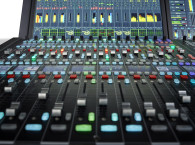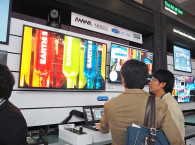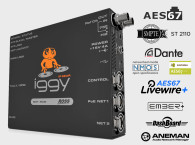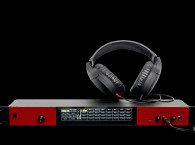
With hundreds in prestigious locations around the world, the latest iteration of the mc²56 – a console that virtually dominates the television audio production industry – rises to even greater heights, incorporating groundbreaking capabilities drawn from Lawo’s flagship mc²96 while retaining the compact size, flexibility and versatile design that have made it the worldwide choice for applications as diverse as broadcast trucks and studios to live performance and recording.
The new mc²56 is optimized for today’s IP-video production environment, designed from the ground up for networking in complex production infrastructures, with full native support for SMPTE 2110, AES67 / RAVENNA, DANTE and MADI audio streams. Its renowned, best-in-class networking performance rises to even greater heights thanks to unique new capabilities such as IP-Share gain compensation and DSCA Dynamic Surface to Core Allocation.
Because reliability is paramount, the console’s local I/O provides dual-redundant IP network interfaces to deliver two simultaneous, identical, connections to the Nova73 router, following the SMPTE 2022-7 “Hitless Merge” standard for stream and port redundancy. Comprehensive local I/O includes 16 Lawo-grade Mic/Line inputs, 16 Line outputs, eight AES3 inputs and outputs, eight GPIO, and a local MADI port (SFP).
When using shared DALLIS I/Os, Lawo’s unique IP-Share Network Gain Compensation prevents unexpected gain changes for up to eight networked consoles when individual users are adjusting their gain settings. The DALLIS I/O communicates with all networked consoles and its IP-Share algorithm sets the optimum analog gain for multi-client requirements. IP-Share additionally ensures that the corresponding gain compensation is applied to the digital gain stages of all consoles when the analog gain of the preamp is adjusted.
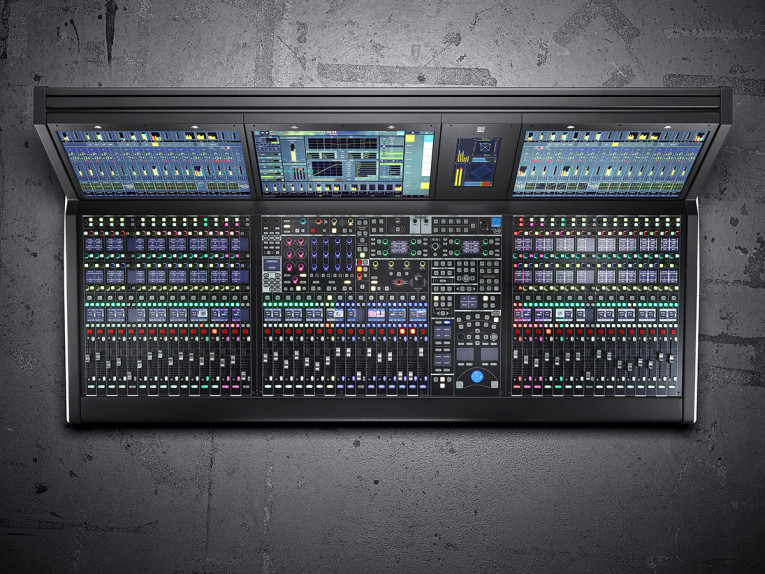
The mc256 work surface has also been enhanced. A new extended free control section gives operators direct access to four parameters in addition to gain control for perfect balance between de-centralized and centralized control workflows, and allows both global and individual parameter assignments to the free controls of each channel strip.
In addition to Button-Glow and colored touch-sensitive encoders, new color-TFTs provide clearer color-coding of channel strips for enhanced visibility and faster access in low light conditions, while Lawo’s revolutionary LiveView provides thumbnail previews of video streams directly in the fader strip.
The overbridge, with ultra-sensitive 21.5” HD touchscreens, contains two slots for individual user panels, with five options to choose from: a 40-key programmable user panel, a TC automation panel, a dedicated Reveal Fader panel, an RTW TM7 Goniometer, and a two-slot RTW TM9 Goniometer.
Well-suited for broadcast applications, with such highlights as multi-user operation, advanced mix assist systems (AutoMix, upmix, downmix and optional Lawo KICK), comprehensive Audio-Follow-Video functionality, integrated 3D/Immersive mixing tools and parallel compression, the mc256 now expands its recording capabilities. The mc256 provides dynamic time-code automation, Lawo-grade mic preamps and processing, DAW remote control and a customizable signal chain with four independent dynamic modules.
Features tailored to the performing arts include Selective Recall, Oversnaps (relative trim-sets), a comprehensive theater automation cue list including multiple triggers (MIDI, GPIO, LTC), Waves SoundGrid and Neumann DMI-8 digital microphone integration, and mirror-console operation.
Built-in loudness metering completes the package, giving full loudness control in broadcast, live, theater and HoW applications. mc256 loudness metering adheres to ITU 1770 (EBU/R128 or ATSC/A85) specifications, and can monitor peaks and loudness separately, or in combination.
Available in frames from 16 to 112 faders, mc²56 supports a massive 8,192 x 8,192 crosspoints, with 888 DSP channels, 144 summing buses and 128 Aux buses at 44.1 - 96kHz operation. With a 64-fader surface suited to most OB vehicle dimensions, a 16-fader stand-alone extender may be added to an mc²56 for subsequent expansion at any time.
More Core Systems
Together with the new generation mc²56, Lawo also unveiled the newest addition to its portfolio of flexible Remote Production tools at IBC 2018: Power Core RP, a powerful 1RU device that features high-density built-in AoIP and HD MADI I/O, eight modular I/O expansion slots, dozens of DSP channels, IP streaming via WAN or LAN, and network-link redundancy via SMPTE 2022-7 Seamless Protection Switching.

Power Core RP is a robust companion for Lawo mc² audio consoles deployed in remote production roles, thanks to its signal density and advanced networking capabilities. Its implementation of the ST2022-7 standard – also known as “hitless merge”, helps guard against network link failure with redundant, auto-switching dual NICs. Power Core RP also adheres to full Class-C jitter / network latency specifications, eliminating the need for third-party WAN gateways and drastically simplifying remote setups.
Power Core RP is fully standards-based, adhering to the ST2110-30/-31, AES67 and RAVENNA AoIP standards. In addition to being perfectly suited for mc2 remote production duties, it’s also the perfect mate for Lawo’s video contribution solution, V__remote4, which provides WAN-capable bi-directional signal transport for 4K/3G/HD/SD-SDI video.
Power Core RP also stands out thanks to its wide array of possible audio connections: two redundant 1GbE SFP ports for AoIP and four HD MADI ports are standard; eight modular I/O slots can be filled with any combination of Mic/Line, AES3, MADI or DANTE cards. A convenient Studio I/O card is even available, each one providing two Mic / Line inputs, two Line outputs, and two dedicated headphone outputs for remote production operators.
What makes Power Core RP even more indispensable for remote production is the fact that its immense DSP capabilities may be fully remote-controlled from WAN-connected Lawo mc2 consoles. All relevant DSP channel parameters, such as gain, fader position, mute, EQ, dynamics, Aux send levels and more, are available to the mc2 operator in the home studio. 48 DSP processing channels are available, plus low-latency on-site monitoring and IFB mixing. A touch-screen optimized GUI makes operation, whether on-site or remote, smooth and intuitive.
At IBC, Lawo also introduced a new Dante interface card option for Power Core. Each two-port card supports up to 2x64 Dante streams. “For broadcasters who want to connect Dante networks to their Ravenna AES67 studio networks, this is the way to do it,” says Lawo Radio Marketing specialist Clark Novak. “Slide a Dante card into your Power Core, plug in a network cable, and the devices in your Dante network become available to your Ravenna network as audio resources. It couldn’t be easier.”
www.lawo.com





